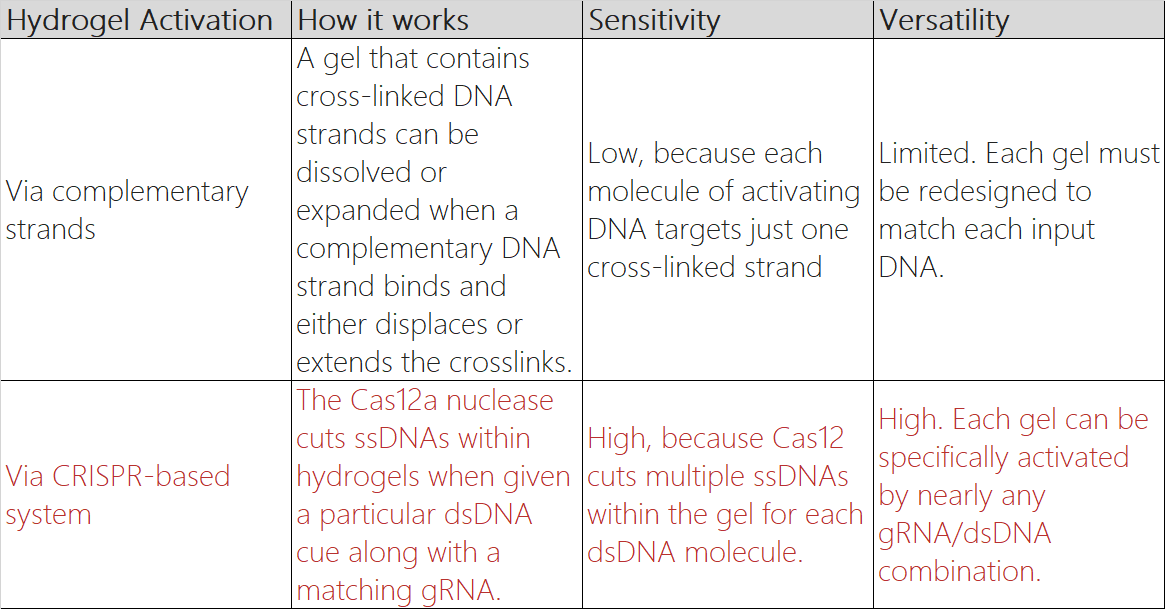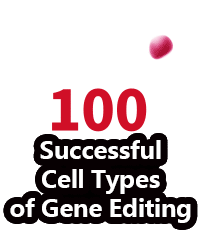DNA is more than just a genetic molecule. Its physical structure and predictable behavior also make it a versatile biological building material. Indeed, DNA has been used to create nanoscale robots, patterns, and 3-D structures for various purposes, and it has been incorporated into hydrophilic polymer gels (hydrogels) for a variety of innovative applications, including biosensing, drug delivery, and more.
But such gels have limited versatility, says Max English, a graduate student in the laboratory of MIT bioengineer Jim Collins. Often, DNA-containing gels are designed with strands that are complementary to the intended DNA activators. This means that “whenever you want to design a material that responds to a different [DNA] cue, you have to redesign the material in its entirety,” English explains.

To avoid such overhauls, English and colleagues created a system for making DNA-containing gels that are capable of responding to nearly any DNA cue simply by providing the CRISPR system’s Cas12a nuclease and a guide RNA (gRNA) that matches the desired DNA trigger. The team exploited a feature of Cas12a called collateral cleavage, in which the enzyme, after cutting its target double-stranded (ds) DNA, nonspecifically chops up surrounding single-stranded (ss) DNAs. The hydrogels are thus fabricated with ssDNAs that are cleaved by Cas12a when, and only when, a given gRNA and dsDNA combination is present.
Using this principle, the team created DNA-containing hydrogels that, in response to a dsDNA cue provided by the researchers, could either release DNA-bound compounds or fully degrade. Such degradation could be used for applications such as liberating encapsulated contents like cells or nanoparticles, initiating flow of a buffer through a microfluidic device, or opening an electrical circuit. These last two examples could potentially be used in diagnostic devices, says Collins, with a change in buffer flow or electrical output signaling the presence of a DNA sequence of interest in a patient sample.
“They showed some really novel applications of responsive hydrogels,” says Rebecca Schulman, a chemical and biomolecular engineer at Johns Hopkins University who did not participate in the study, in an email to The Scientist.
“Their approach is totally customizable . . . [and] is really cleverly designed,” adds bio-engineer Dan Luo of Cornell University who was not involved in the research. “It’s a real integration of molecular biology and materials science.” (Science, 365:780–85, 2019)

